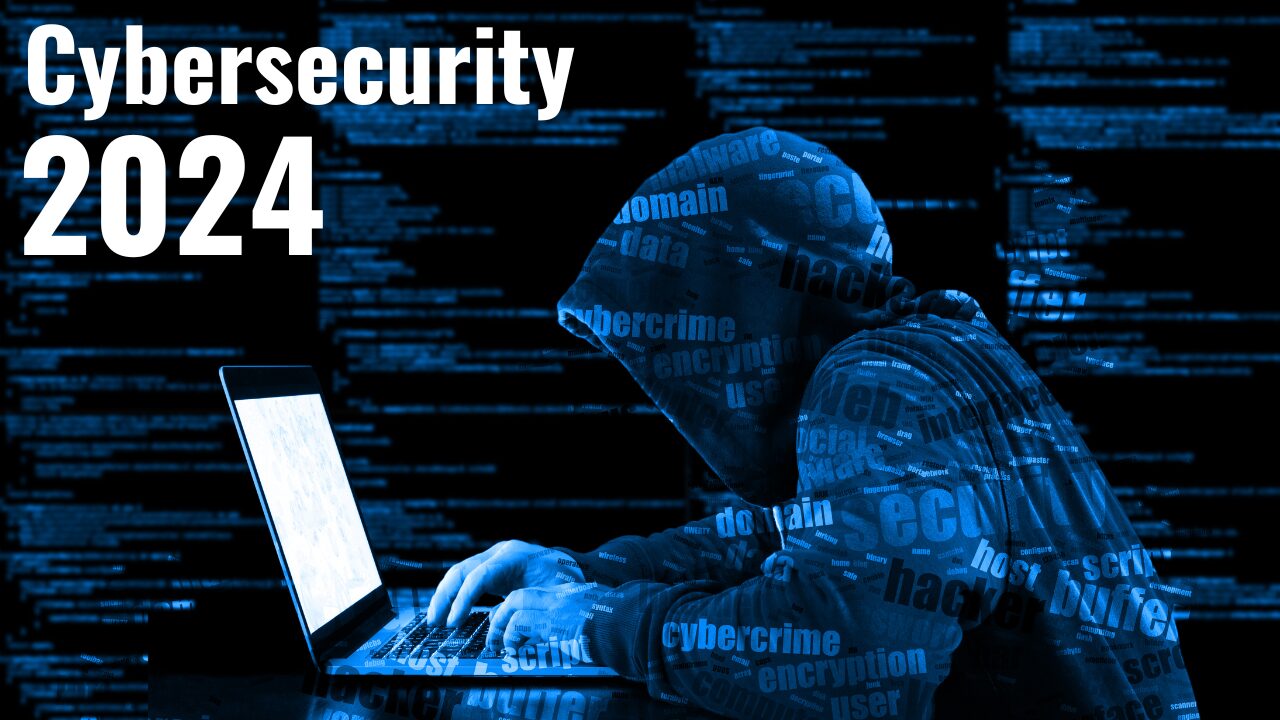Top 5 Cybersecurity Challenges Facing Corporations in 2024: Emerging Threats and Strategic Responses
As you navigate the corporate world in 2024, cybersecurity is a formidable pillar of concern. The digital landscape has continued to morph, presenting sophisticated challenges that demand your attention and preemptive action. With the rising tide of ransomware attacks and the harnessing of AI by cybercriminals, it’s evident that threat vectors are becoming more complex and insidious, challenging your organization’s resilience and preparedness.
Understanding the cybersecurity threats you face is critical. Powered by generative AI, espionage now extends beyond the geopolitical arena, interfering with the core of enterprise security. Cybersecurity is not just about protecting data – it’s about safeguarding your reputation and ensuring the continuity of your operations. The infiltration of ransomware into the deeper recesses of your networks poses a relentless threat, while the expansion of the Internet of Things (IoT) ecosystems introduces unfamiliar vulnerabilities.
You must adopt a forward-thinking posture. Embrace comprehensive security strategies, which include advanced threat detection and zero-trust frameworks, to fortify your defenses against the dynamic threats that loom on the horizon. Your vigilance and proactive measures are crucial in safely steering your corporation through the cybersecurity challenges defining the corporate battleground in 2024.
Evolving Threat Landscape
In 2024, your organization faces an evolving threat landscape with complex challenges that require advanced defense strategies.
Advanced Persistent Threats (APTs)
APTs represent sophisticated, long-term cyber attacks. Your vigilance is crucial, as perpetrators often target high-value data over extended periods, leveraging stealth to maintain a foothold within your network.
Ransomware Innovations
Ransomware remains a critical concern, with Ransomware-as-a-Service (RaaS) simplifying the deployment of attacks. Stay informed about the latest ransomware strains and defensive measures as threat actors continually refine their tactics to circumvent security barriers.
State-Sponsored Cyber Activities
You must also be aware of state-sponsored activities, which are often geopolitical in nature. Such cyber campaigns might target corporations to gain economic, political, or strategic advantages. Your cybersecurity plan should include protocols to detect and mitigate actions from these state-linked adversaries.
Remote Workforce Vulnerabilities
In 2024, your corporation’s cybersecurity is continually challenged by the vulnerabilities introduced by remote workforces. Pay close attention to these specific areas of concern to safeguard your organization.
Endpoint Security Management
With the growth of remote work, endpoint security management is critical. Endpoint devices like laptops and smartphones act as access points to your corporate network, necessitating robust security protocols. Ensure all devices have up-to-date antivirus software, firewalls, and intrusion detection systems.
Unsecured Personal Devices
The use of unsecured personal devices for work-related activities poses a significant risk. Without the controlled environment of a physical office, personal devices often lack professional-grade security measures. It’s crucial to implement and enforce a strict policy regarding the use of personal devices, which may include:
- Mandatory use of secure, password-protected Wi-Fi connections.
- Installation of security applications is required before granting network access.
VPN and Network Infrastructure
VPNs and your network infrastructure are the backbones of secure remote access. However, they can become vulnerable points if not adequately managed. Scrutinize your VPN setup with these specifics in mind:
- Ensure VPNs are always updated to the latest security standards.
- Regularly audit your network infrastructure for any potential exploits or breaches.

Regulatory Compliance and Legal Issues
In 2024, your corporation must navigate an increasingly complex web of global regulations and legal challenges related to cybersecurity and data protection.
Global Data Protection Regulations
You are now operating in a landscape where global data protection regulations have intensified. Your adherence to these regulations is crucial. The General Data Protection Regulation (GDPR) in the EU and similar frameworks across other regions, like California’s CCPA/CPRA in the United States, mandate strict controls over personal data. For your business, this means:
- Compliance Programs: Establishment and management of robust data protection programs.
- Cross-Border Data Transfers: Ensuring that international data transfers comply with the stringent requirements of various jurisdictions.
Litigation and Legal Precedents
Litigation risk regarding cybersecurity breaches has grown, with courts increasingly setting legal precedents that could affect your business. As a result, you will need to:
- Monitor Legal Developments: Keep abreast of new judicial decisions that could impact legal strategies.
- Proactive Defense: Implement proactive measures to defend against rising cybersecurity claims and class action lawsuits for data breaches.
Your active engagement with the evolving regulatory environment and legal landscape is imperative to manage your risks and safeguard your reputation.
Cloud Security Concerns
In 2024, cloud security remains a pivotal aspect of your corporate cybersecurity strategy, with specific challenges arising from complex multi-cloud environments, data breach implications, and identity and access management.
Multi-Cloud Environments
Your adoption of multi-cloud environments is driven by the need for flexibility and robust services. However, managing security protocols consistently across different platforms is critical. Vendor-specific vulnerabilities and varied security controls make it imperative for you to ensure:
- Consistent security policy enforcement across platforms.
- Seamless integration of security tools that work with multiple cloud providers.
Data Breach Implications
Data breaches have a high potential for significant financial and reputational damage to your company. Understanding the shared responsibility model is essential in a cloud setting, as it delineates what security measures you control versus the cloud provider. Important points include:
- Immediate action and notification protocols are pivotal when a breach is detected.
- Regular data audits and compliance checks can help mitigate the risk of a breach.
Identity and Access Management
Robust identity and access management (IAM) systems are the backbone of securing your cloud infrastructure. They ensure that only authorized individuals have access to sensitive data and systems. To strengthen your cloud security posture, consider:
- Implementing multi-factor authentication (MFA) for an added layer of security.
- Regularly reviewing and updating access rights to minimize the risk of unauthorized access.
Artificial Intelligence and Machine Learning
In the dynamic landscape of cybersecurity, you must understand that Artificial Intelligence (AI) and Machine Learning (ML) act as a double-edged sword, presenting not only sophisticated threats but also advanced defensive mechanisms.
AI-Driven Threats
Your corporate cybersecurity can be compromised by AI-driven threats in ways traditional measures may not anticipate. With AI, phishing has evolved into more personalized and believable attacks. Vishing, a form of voice phishing, witnessed a rise in 2023 and continues to threaten the security of your sensitive information. Additionally, attackers leverage AI to analyze and mimic normal user behavior, making anomaly detection more challenging.
Defensive AI Mechanisms
On the defense side, deploying AI technologies aids your corporation by automating the analysis of vast data volumes to spot hidden threats. AI doesn’t just automate mundane tasks; it offers predictive insights that push your cybersecurity from reactive to proactive stances. With AI, you can expect a refinement in intrusion detection systems (IDS) and an enhancement in the accuracy of threat intelligence platforms.
Third-Party and Supply Chain Risk
You face a complex cybersecurity landscape where managing the risks associated with third-party vendors and supply chain partners is crucial. Enhanced due diligence and robust security protocols are no longer optional but necessary for safeguarding your organization’s data and systems.
Vendor Risk Management
Third-party vendors are integral to your business operations, yet they present a significant vector for cyber threats. To mitigate this risk, you should thoroughly assess your vendors’ cybersecurity postures. Begin by compiling a comprehensive inventory of all your vendors. For each vendor, assess their access to your systems and the sensitivity of the data shared. Prioritize them based on the potential impact they may have on your organization. Key steps in your vendor risk management process should include:
- Due Diligence: Before onboarding, scrutinize vendors’ security practices and compliance with relevant regulations.
- Continuous Monitoring: Implement ongoing surveillance of vendors’ security performance to detect and address vulnerabilities promptly.
- Contractual Agreements: Ensure each vendor agreement includes clear security requirements and audit provisions.
Software Supply Chain Integrity
The integrity of your software supply chain is another pivotal concern. It’s vital to know the provenance of your software components and the security practices of your software suppliers. Your actions should include:
- Secure Development Practices: Confirm your suppliers adhere to secure coding guidelines and utilize software development life cycle (SDLC) security.
- Vulnerability Tracking: Maintain an active list of known vulnerabilities in your software components and ensure your suppliers are transparent about their vulnerability management processes.
- Update and Patch Management: Develop a protocol for applying updates and patches promptly, as they are integral to maintaining software supply chain integrity.
By actively managing both vendor risk and the integrity of your software supply chain, you can build resilience against some of the most insidious and potentially damaging cyber threats in 2024.
Contents
- 1 Top 5 Cybersecurity Challenges Facing Corporations in 2024: Emerging Threats and Strategic Responses
- 2 Evolving Threat Landscape
- 3 Remote Workforce Vulnerabilities
- 4 Regulatory Compliance and Legal Issues
- 5 Cloud Security Concerns
- 6 Artificial Intelligence and Machine Learning
- 7 Third-Party and Supply Chain Risk



